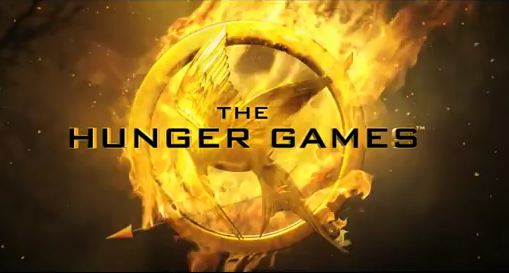ans of the Hunger Games should be proud to know that its new film under the direction of Gary Ross is a true representation of the powerhouse trilogy by Suzanne Collins. The movie stays close to the premise of the books, even taking some of the dialogue directly from the story. The books tell the story of a post-apocalyptic country called Panem, which is made up of twelve districts ruled over by a tyrannical Capitol. Every year for the past seventy four years, the Capitol has forced each district to offer up one boy and one girl tribute for the annual Hunger Games, a fight to the death on live television.
The story follows the journey of sixteen-year-old Katniss Everdeen (Jennifer Lawrence), who is from the impoverished District 12. Unlike the book, which gives readers a clear picture of the district, the movie spends little time in 12 except for a few quick flashes of the elders or young children dressed in rags trying to eke out a living. However, Katniss’s key relationships with her mother, little sister Prim, and her friend Gale (Liam Hemsworth) are firmly cemented before the emotional reaping scene. This is a pivotal scene where Prim is picked as a tribute for the 74th Hunger Games and Katniss volunteers to go in her place.
Probably one of the most immediately noticeable differences is the absence of Madge Undersee, the daughter of District 12’s mayor and bearer of Katniss’s famous Mockingjay pin in the book. Instead, Katniss receives the pin while at the Hob, District 12’s local black market. Sadly, the movie also ceases to tell the pin’s interesting back story, which tells tale of the Mockingjay bird itself.
The movie rushes forward as Katniss, 12’s male tribute Peeta (Josh Hutcherson), their plastically enthusiastic guide Effie Trinket (Elizabeth Banks), and their perpetually half-drunk mentor Haymitch Abernathy (Woody Harrelson) board a high-speed train for the Capitol. When they arrive they are put through a quick but rigorous beauty routine and popped into chariots for the opening ceremonies of the Games. Soaring music accompanies Katniss and Peeta as they move down the avenue with flaming capes, the CGI effects of which look good from the few quick glimpses audiences get of them. Waiting for them in the city circle is the infamous President Snow (Donald Sutherland), who looks grandfatherly, but perfectly captures all of the menace and apathetic deadliness of the Snow from the book.
Unfortunately, there is not nearly enough time to develop the true relationships between such secondary characters as Cinna (Lenny Kravitz), Katniss’s stylist, and Haymitch, who sobers up just in time to give the two teens some last-minutes advice. Even Katniss’s relationship with Peeta is not very clearly outlined before they are tossed into the arena and contained PG-13 violence breaks loose.
The violence comes off as very regulated within the confines of the rating, though more violence or grotesque images are not really needed. The few things audiences do see – a spatter of blood on the grass here, a bloody knife stabbing downward, the brutal expression on a tribute’s face, the horror in a younger kid’s eyes – is all that is needed to make the point.
All throughout the Games, the camera regularly cuts back to Caesar Flickerman (Stanley Tucci) and Claudius Templesmith (Toby Jones), the television personalities that narrate the Games and explain the various flora and fauna in the arena, filling in the people who have not read the book.
In fact, a lot of the movie could leave viewers clueless if they have not read the book; a shortcoming of the movie showing that it was mainly intended for fan-based audience. For the most part though, the movie is well played and well written, with lots of powerful lines, the impact of which is maximized by their scarcity. The actors nailed their performances and their characters, managing to do the book justice while breathing a new sort of life into the personalities fans love so well.
One of the major points of the film that can either make it or break it for fans is the shooting style. The camera hops all over the place, shaking like someone who isn’t used to holding a video camera is doing the filming. That, combined with a slew of close-ups that hold tightly on a character’s face or some other important object, give the movie a stylistic feel that can be almost nauseating sometimes.
Humor can be sparse at times, but a movie about kids killing each other is not going to be very comedic. Interestingly, the filmmakers also decided to add some swearing to the script – not anything foul, but not the sort of thing fans would imagine someone from the Seam (the neighborhood from which Katniss hails in 12) using on a regular basis.
Once again, it is the perfect book-movie; all the emotions fans experienced while reading the book are there, only magnified as they are played out on the silver screen. The Hunger Games is a film worth seeing, with stellar performances and captivating story. Viewers who have yet to read Collins’s novel should pick up a copy to really see the movie for what it’s worth: an accurate presentation of a dystopian tale.
FILM on fire: Fans have been itching for it. And it’s finally here. The Hunger Games has taken the world by storm.
Alyssa Anglin, Staff Reporter
April 5, 2012

